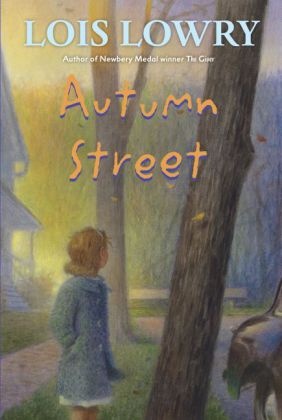Read more
Zusatztext "Readers . . . will find this emotionally charged reverie understandable and unforgettable." Booklist, ALA, Starred Review Informationen zum Autor Lois Lowry is the author of more than fifty books for children and young adults, including the New York Times bestselling Giver Quartet and the popular Anastasia Krupnik series. She has received countless honors, among them the Boston Globe–Horn Book Award, the Dorothy Canfield Fisher Award, the California Young Reader Medal, and the Mark Twain Award. She received Newbery Medals for two of her novels, Number the Stars and The Giver . Klappentext There are things to be afraid of in the woods at the end of Autumn Street. But the year she goes to live in her grandfather's big house-while her father is fighting in World War II-Elizabeth can't put a name to those dark, shadowy fears. But she finds solace in her friendship with Charles, a boy who teaches her to take risks. Together the two children try to interpret an adult world that is always puzzling and often cruel. Together, on a day when snow obscures everything but terror, they leave that world behind and enter the world that is waiting in the woods. This lovely repackaged edition features a new introduction by the author. Leseprobe Chapter One It was a long time ago. Though it seems, sometimes, that most things that matter happened a long time ago, that is not really true. What is true is this: by the time you realize how much something mattered, time has passed; by the time it stops hurting enough that you can tell about it, first to yourself, and finally to someone else, more time has passed; then, when you sit down to begin the telling, you have to begin this way: It was a long time ago. *** If, instead of a pencil, I held a brush in my hand, I would paint the scene: the scene of Autumn Street. Perspective wouldn’t matter; it would be distorted and askew, as it was through my own eyes when I was six, and Grandfather’s house would loom huge, out of proportion, awesome and austere, with the clipped lawn as smooth and green as patchwork pockets on a velvet skirt. The rough pink brick of the sidewalk, bordered by elms, would wind the length of the street, past the Hoffmans’ house, past the bright forsythia bushes that grew around the great-aunts’ front porch, past the homes of strangers and friends and forgotten people, finally disappearing where the woods began. Even today, with a brush, I would blur the woods. I would blur them with a murky mixture of brown and green and black, the hueless shade that I know from my dreams to be the color of pain. But the sky above Autumn Street would be resplendent blue. In the sky, the painted ghosts would flutter, hovering like Chagall angels, benevolently smiling down on the strip of Pennsylvania where they had peopled a year of my life. Grandfather would be there in the sky, sailing past, holding his cane, wearing his most elegant suit, his tie in place and his hair impeccably brushed. Grandmother wouldn’t sail; she would hover primly in the most tasteful and protected corner of the heaven, buttoned to her chin and holding her ankles neatly crossed. The great-aunts would soar grandly by, holding hands and tittering, a trio of good manners and barely contained laughter, wearing gauzy dresses that billowed. Poor little Noah—though I would never have called him that, then—he is among the ghosts, and I would have to paint him lurking somewhere, perhaps behind a cloud, sullen, the only one in my sky who would not be smiling. Charles. How I would love painting Charles in the bright blue over Autumn Street: feisty and streetwise still, Charles would be shoving and pushing his way across the canvas sky, kicking pebbles, stepping on ants, t...

